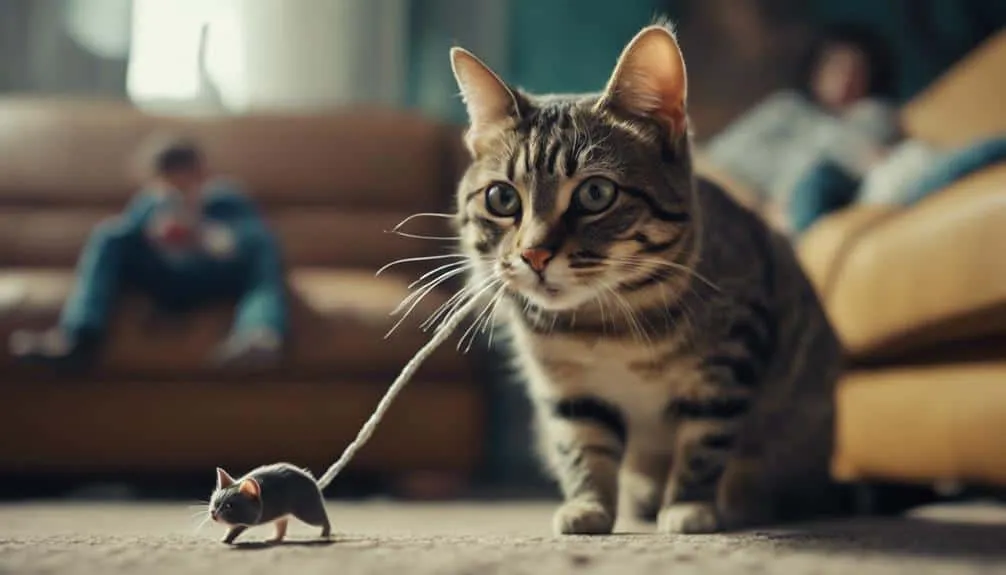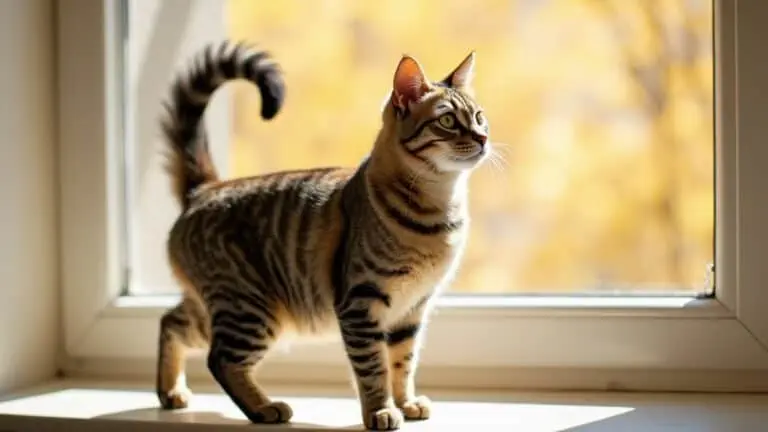The Best Fluffy Pancakes recipe you will fall in love with. Full of tips and tricks to help you make the best pancakes.

When it comes to capturing elusive felines, did you know that on average, a feral cat can produce up to 3 litters per year? Understanding the intricacies of cat capture is crucial for effective population management and rescue efforts.
From mastering baiting techniques to ensuring safe handling, each step plays a pivotal role in the successful capture of these agile creatures.
Stay tuned to discover the essential tips and tricks that will elevate your cat capture skills to the next level.
Key Takeaways
- Establish consistent feeding routines and unique cues for successful cat capture.
- Choose traps wisely, considering size, design, and baiting strategies.
- Strategically place traps during active feeding times for optimal results.
- Prioritize safe handling practices with gloves and calm approaches for cat transport.
Setting the Scene for Success
To set the scene for success in capturing cats, establish a consistent feeding routine to predict their behavior and create a sense of familiarity. Cats are creatures of habit, so by feeding them at the same times each day, you can begin to understand their patterns and movements. Using a drop trap can be effective, but it's essential to make the environment enticing. Incorporate unique sounds or cues during feeding times to associate positive experiences with the trap.
Before attempting to trap a cat, strategically withhold food for a short period. This will increase their motivation to enter the trap in search of a meal. Adjusting feeding times to align with the cat's existing patterns can significantly improve trapping opportunities. By familiarizing yourself with their feeding habits, you can anticipate when they'll be most active and receptive to entering the trap. Remember, consistency and patience are key when setting the stage for successful cat capture.
Choosing the Right Tools
For successful cat capture, ensuring you have the right tools is crucial. When selecting traps, opt for ones that are at least 30 inches in length to maximize trapping efficiency.
Look for traps equipped with sliding rear doors as they provide easy access and handling of trapped cats. Gravity traps like the True Catch Model 30 LTD are perfect for trapping multiple cats in confined spaces, while spring-loaded traps such as the Tomahawk Model 606 NC are beginner-friendly and effective for swift cat capture.
Pay attention to trap mat designs, like those with PVC coin grip flooring, for enhanced comfort and easy cleaning during trapping operations. Whether you're dealing with neighborhood cats or trapping feral cats, consider the benefits of box traps and DROP traps that feature TRIP PLATE mechanisms for successful captures.
Having the right tools can make a significant difference in your cat trapping endeavors.
Baiting Techniques for Success
When baiting traps for successful cat capture, strategically choose strong-smelling treats like jarred baby food or mackerel to effectively entice felines into the trap. Cats are drawn to moist, pungent scents, so experiment with options like tuna or chicken to discover what motivates specific cats.
Avoid dry food as bait; instead, opt for irresistibly fragrant treats that cats can't resist. Place the bait at the back of the trap to encourage the cats to enter fully and trigger the trap mechanism.
Consider strategically withholding food for up to two days to increase a cat's drive to seek out the bait inside the trap. By following these baiting techniques, you can enhance your chances of successfully capturing elusive felines.
Strategic Placement and Timing
To enhance your success in capturing elusive felines, strategically placing traps in areas where cats congregate and setting them during their active feeding times is crucial for maximizing trapping efficiency and success rates. Cats are creatures of habit, often frequenting feeding stations or following specific travel paths. By positioning traps in these familiar areas, you significantly increase the chances of capturing your target. Timing plays a crucial role as well. Setting traps during the cats' active feeding times, usually in the early morning or late evening, aligns with their natural instincts and enhances trapping success.
Consider the weather conditions when placing traps. Cats are more likely to enter traps when they feel comfortable, so avoid extreme temperatures or adverse weather. Additionally, be mindful of the trap placement; avoid high-traffic areas or noisy locations that might startle the cats. Remember, strategic placement and timing are fundamental elements in maximizing trapping efficiency and ultimately boosting success rates in your cat capture endeavors.
Handling and Transporting With Care
Using gloves and a towel when handling feral cats is essential for your safety and to prevent scratches. Approach the cat calmly to avoid triggering defensive behaviors. Respect their boundaries to build trust and ease the handling process. When it's time to transport the cat, wrap them in a blanket or towel before placing them in a carrier for security and comfort. Create a calm environment inside the carrier to ensure the cat feels safe during transport.
| Handling and Transporting Tips | ||
|---|---|---|
| Approach the cat calmly | Wrap the cat in a blanket or towel | Create a calm environment in the carrier |
Remember to draw the cat towards the carrier using treats or a toy, and disguise the trap by placing it in an area where the cat frequents. Withhold food for a short period before trapping to increase the chances of success. By following these tips and showing care and patience, you can effectively handle and transport cats while keeping them safe and calm.
Frequently Asked Questions
How Do You Catch a Cat Effectively?
To catch a cat effectively, approach stealthily with quick reflexes and gentle handling. Require patience, strategic positioning, treat incentives, avoid sudden movements, create a quiet environment, move slowly. Remember, practice makes perfect in mastering cat capture.
What Is the Best Bait for a Cat Trap?
When setting up a cat trap, the best bait to lure them in includes tuna treats, catnip surprises, toy mice, chicken bits, sardine snacks, turkey slices, cheese chunks, bacon bits, salmon temptations, and liver treats. These irresistible options will help you catch a cat effectively.
How Do You Catch a Cat That Won't Go in a Trap?
To catch a cat that won't go in a trap, you need a stealth approach. Use gentle persuasion, quick reflexes, and patience. Position strategically, offer tempting treats, and execute a covert operation. It's a solo mission that requires tactical retreats and creative solutions.
What Is the Best Trap for Cats?
For capturing cats, the best trap depends on your needs. Consider indoor vs. outdoor traps, nighttime trapping, proper placement, camouflage, maintenance, size, weather, relocation, monitoring, and release techniques. Tailor your choice to suit your situation.
Conclusion
Congratulations on mastering the art of cat capture! By following the tips and tricks outlined in this guide, you have gained the knowledge and skills needed to successfully trap and handle cats, especially feral ones.
Remember to always prioritize safety, ethics, and post-trapping care for the well-being of the animals. Your dedication to helping cats through trapping and TNR projects is truly admirable.
Keep up the great work and continue making a positive impact in the feline world!








